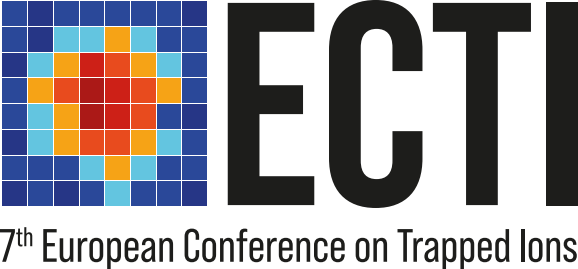Speaker
Description
We present here an experiment focusing on the extension of sympathetic cooling techniques to the unfavourable case of large mass ratios between the two ionic species involved and for ions injected from outside the trap. This study is essential to the success of ambitious projects such as the GBAR (Gravitational Behaviour of Antihydrogen at Rest) project aiming to study the free fall of a antihydrogen atom prepared at rest [1] or non-destructive detection of singly-charged heavy molecules [2].
We develop a testbed experiment to study this process with 88Sr+ (the laser-cooled ion) and 9Be+ (the sympathetically cooled ion).The possibility of optically addressing the Be+ ion gives the advantage to perform thermometry measurements. Thus, cooling Be+ will enable us to control the initial energy of the ion launched in the target trap. This will allow us to measure for the first time the capture dynamics of a light ion by a Coulomb crystal, and to follow its cooling over several decades (typically from 10000K to mK). We will compare these measurements with numerical simulations [3].
Sr+ ions are also used to validate the trapping and cooling conditions and test the transport protocols of a single ion from one trapping zone to another. A method for characterizing the initial energy of an ion on arrival in the target trap has been developed (via Doppler recooling). Comparison with injection simulations showed good agreement between the calculated and measured kinetic energies. In a second phase, thanks to the Be+ cooling laser, it will be possible to cool a single Be+ ion and transport it with controlled kinetic energy to the second trapping zone, already loaded with a Sr+ Coulomb crystal. Thermalization via Coulomb interaction will then be studied.
The method chosen to quantify the kinetic energy loss of the Be+ ion is based on measurement of the laser-induced fluorescence rate at resonance, which produces no laser cooling or heating on the oscillating ion. Spectroscopic measurements on the Be+ ion will be used to develop temperature diagnostics and cooling protocols for the GBAR experiment.
[1] P. Perez and Y. Sacquin, Classical and Quantum Gravity (2012)
[2] C. Champenois, et al. Non-destructive detection method of charged particles without mass limitation. EP20150767557 (2015)
[3] N. Sillitoe et al, JPS Conf. Proc (2017)

